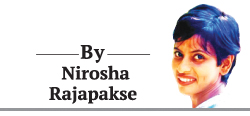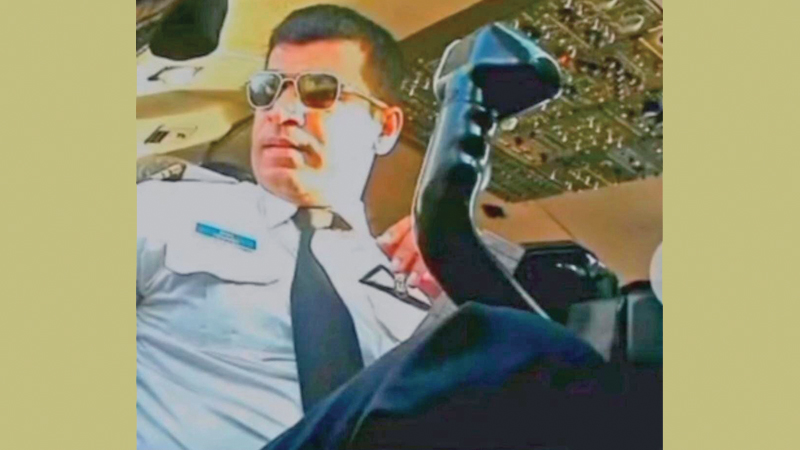Pilots are a unique breed, and their training too is undeniably demanding. The ability to handle extreme tension and severe strain is a sine qua non skill and capacity in aviation
 My standpoint and notion, hemmed in that the community of aviators are inclined and reinforced by the top-notch declarations, made by Bessie Coleman, the first woman of Native American descent who was plucky and intrepid enough to earn a pilot’s licence despite a tremendous discrimination, meted out to her on the aspect of her skin colour in early 1920s.
My standpoint and notion, hemmed in that the community of aviators are inclined and reinforced by the top-notch declarations, made by Bessie Coleman, the first woman of Native American descent who was plucky and intrepid enough to earn a pilot’s licence despite a tremendous discrimination, meted out to her on the aspect of her skin colour in early 1920s.
“The air is the only place free from prejudice” deliberately becomes my most favourite statement that Bessie had ever made.
Aviators are masters of craft, and in that light itself, they may call themselves “A Big Cheese” that has got an incredible knack for securing a formidable position in society.
Inquisitiveness
The protagonist of today’s epic is aviator Dihan R. Fernando. His intrinsic lust for the blue sky makes him the crush for the inquisitiveness of the writer who dwells in me. I savour every moment of my penning on the sun- kissed wild blue yonder through which he flies.
The dazzling sky rushes to be the daily bread of his eyes. During the time of twilight, he paints a dusky sky. During the time of bliss and delight, he paints a cobalt sky, bearing a resemblance to a tinge and tint of the radiant and serene sky by daylight; they enkindle a hunch and inkling of repose and tranquility that settle him with stability, fealty and constancy in Orville and Wilbur Wright’s celebrated invention.
To my unmitigated simultaneous ecstasy and astonishment, I find that Dihan adores “High Flight”, falling into the category of romantic nature poetry, composed in iambic pentameter during World War II by John Gillespie Magee Jr. a Royal Canadian Air Force pilot, despite by the fact that poems do not float his boat; I am well aware that he has got a chip on his shoulder about limericks and sonnets.
In my artistry that thrives on an imaginative faculty, I would be tickled pink as if I walked on air, beaming from ear to ear while reciting to Dihan the most embraced lines of “High Flight” that flow as “Oh! I have slipped the surly bonds of Earth and danced the skies on laughter – silvered wings”. I may have a throwback on BBC’s telecast on President Ronald Reagan’s address on the aftermath of the Challenger space shuttle disaster where he quoted the lines from “High Flight” which is Dihan’s top choice too.
Dihan, the principal figure in my narration, lands me onto the diverse spectrum of fascinating genres in cinema. The collaborative interaction between the history of the film industry as well as that of the mainstream culture seems to be significantly gripping as you gain an insight into the correspondence between the rendition of pilot heroes, appearing in movies and popular sentiment of aviation. I fly into my recollection on the first-rate terrific pilot characters in films; they are a bold and diverse bunch of aviators among whom Captain Mack from Soul Plane and Lovell of Apollo 13 remain prominent in my personal classification.
With mere assumptions, I force myself to rush into conclusions where I may opine the fact that Dihan might live in the shadow of Tony Scott’s Top Gun where Tom Cruise, playing the role of Lieutenant Pete “Maverick” Mitchell robs the hearts of aerophiles.
In my rapturous inventiveness, I picture Dihan being my simile and metaphor in a perfect figure of speech where I share my remarks on Sully: Miracle on the Hudson, a cherished movie in which versatile Tom Hanks played the character of Captain Chesley, an iconic commercial pilot whose controversial emergency landing saved the lives of every passenger on board, following a bird strike on his plane.
In spite of being vulnerable to demanding schedules, “Fate is the Hunter” and “The High and the Mighty” would fuel Dihan’s passion for flying; the former is Ernest K. Gann’s memoir that brings out a rational and sensible depiction about the lives of wartime and commercial pilots whilst the latter being an imaginary narrative, surrounded by a transcontinental flight.
Dihan stirs his own enthusiasm with Saint- Exupery’s “Night Flight” and “Wind, Sand and Stars” that assure him with discerning peek and peep into the cohort of initial commercial aviation and the individual experience of flying.
Flying is Dihan’s forte, and I may presume the fact that he had been driving his childhood dream of becoming a pilot despite the encountered setbacks in the trajectory of life.
Passions
Dihan painted a reflection on what he fancies as a child and traverses as to how those passions may translate into contemporary interests. The hunch of flying may be exceedingly poignant. The unconventional outlook that it delivers on the world is phenomenal, where it has a unique ability to nurture admiration and amusement.
As Dihan may perceive, the act of flying intermittently showcases the sense of pride and freedom that facilitate the pursuit of reveries. There remains a catchphrase, which says that the ability to fly aircraft is simply an authentication to a man’s ingeniousness.
Pilots are a unique breed, and their training too is undeniably demanding. The ability to handle extreme tension and severe strain is a sine qua non skill and capacity in aviation. Albeit, the general public usually has got an idealised point of view on pilots, in actuality, the work that they are required to perform can be highly demanding while being heavily scrutinised.






